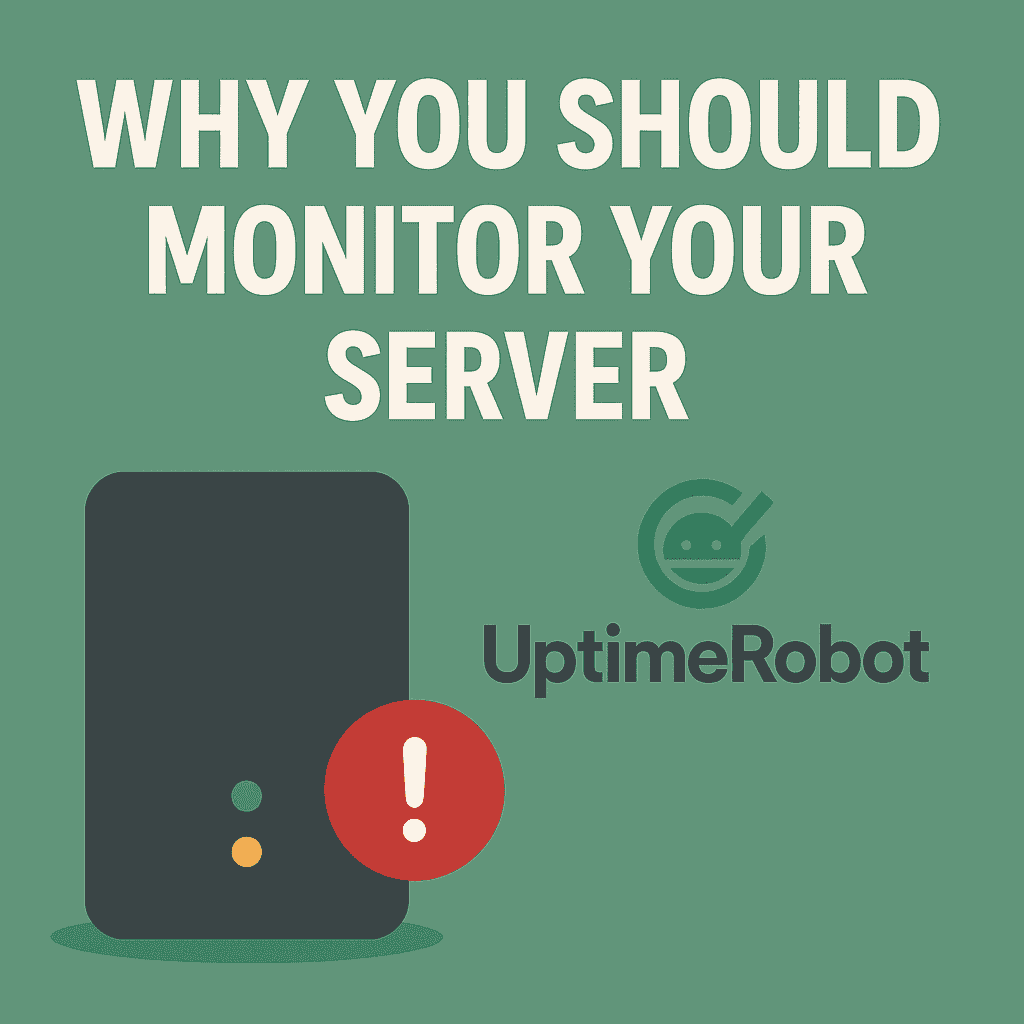Introduction
Your website going down is one thing — not knowing it’s down is another.
I recently experienced a 10-hour outage on this blog site without noticing. No alerts. No emails. Nothing. I only discovered it after logging in for a routine check. That downtime could have been avoided or resolved sooner if I had a basic monitoring tool in place.
In this post, I’ll share why server monitoring is essential — even for a simple personal blog — and how the free tier of UptimeRobot is a perfect solution for lightweight, effective monitoring without running your own tools.
🌐 Why Server Monitoring Matters
Whether you run a full-fledged platform or a personal tech blog like mine, uptime is crucial. Here’s why monitoring should be non-negotiable:
- ✅ Availability – If your site is down, visitors can’t access your content.
- 🔒 Reputation & SEO – Prolonged downtime affects search engine rankings and user trust.
- 🚨 Early Detection – Server crash? DNS issue? Expired SSL cert? Monitoring helps you catch these before your users do.
- 📉 Lost Opportunities – Even if it’s “just a blog,” each hour offline is lost engagement or credibility.
In my case, that 10-hour gap left me completely unaware of the issue until much later — a simple alert could’ve made a difference.
💡 Self-Hosted vs. Third-Party Monitoring
You can run your own monitoring using tools like:
- Netdata
- Prometheus + Grafana
- Nagios or Zabbix
But here’s the catch: self-hosted tools only work if your monitoring server stays online. They also consume extra resources, require maintenance, and don’t make sense if you’re only tracking one or two websites.
That’s where third-party cloud monitoring services shine — no need to install anything, and they’ll alert you even if your server is completely down.
✅ Why UptimeRobot Free Tier Fits Perfectly
I explored a few options, and UptimeRobot checked all the boxes for my needs:
- 🎯 5 monitors
- 🔄 5-minute check intervals
- 📧 Email alerts
- 🌍 Support for HTTP(s), Ping, Port, Keyword, and SSL monitoring
- 💸 100% free
Since I only maintain one blog site, this free tier is more than enough. I don’t need push notifications, SMS alerts, or fancy dashboards — I just want to know if my site is down, and UptimeRobot delivers.
🛠️ Setting It Up (Takes 5 Minutes)
Here’s how I configured it:
- Sign up at https://uptimerobot.com
- Go to Monitors > Add New Monitor
- Choose HTTP(s), then enter your blog URL
- Set your friendly name (e.g., “My Blog Monitor”)
- Add your email contact for alerts
- (Optional) Enable SSL certificate expiry monitor or Keyword check
That’s it! From now on, UptimeRobot will check your site every 5 minutes and notify you immediately when it’s down or unreachable.
Disclosure: This post contains affiliate links. However, free tier sign-ups through these links do not generate any commission for me
🔔 Real-World Benefits I Noticed
After running it for a few weeks, here’s what I appreciated:
- 📥 Instant alerts via email the moment my site is unreachable
- 📊 Uptime history I can refer to monthly
- 🧠 Peace of mind, especially when I’m away from my laptop or traveling
- 🧩 No setup or backend code required
I now feel more confident that I’ll be notified if something goes wrong — and can act fast.
📌 Final Thoughts
If you’re running a single website or blog, there’s no excuse not to monitor your uptime — especially when a tool like UptimeRobot offers it for free.
You don’t need a DevOps background or complex infrastructure. Sometimes, simple is powerful. UptimeRobot’s free tier is a solid option that just works.
Even one outage is one too many if you don’t know about it.

